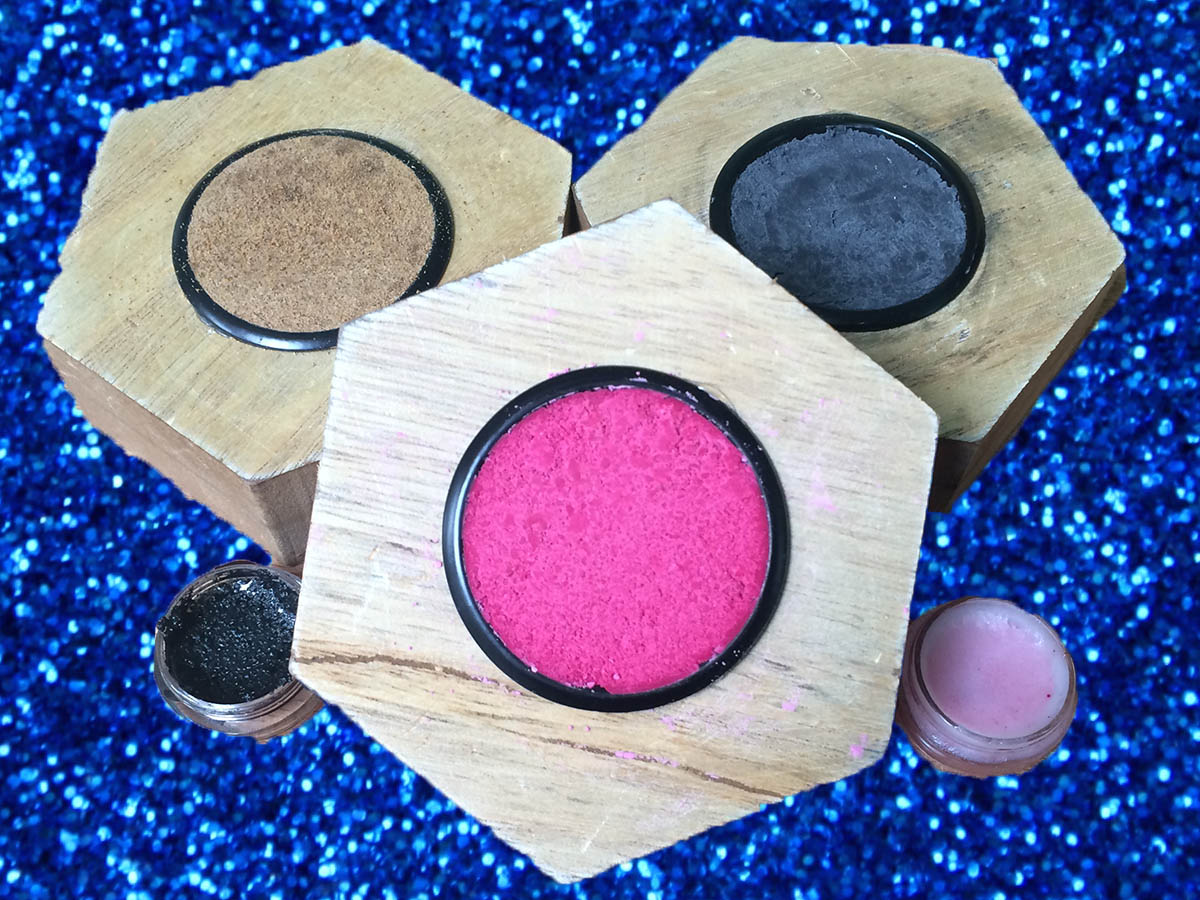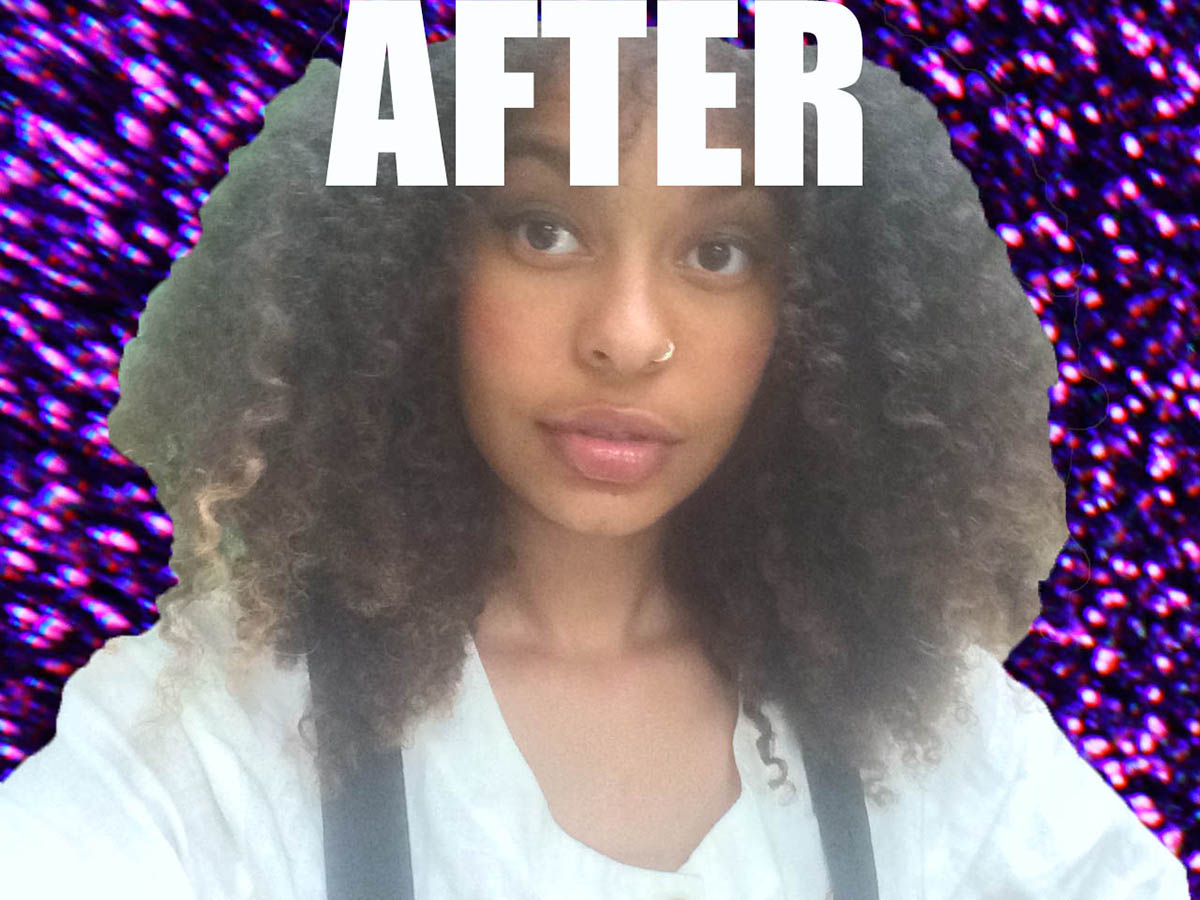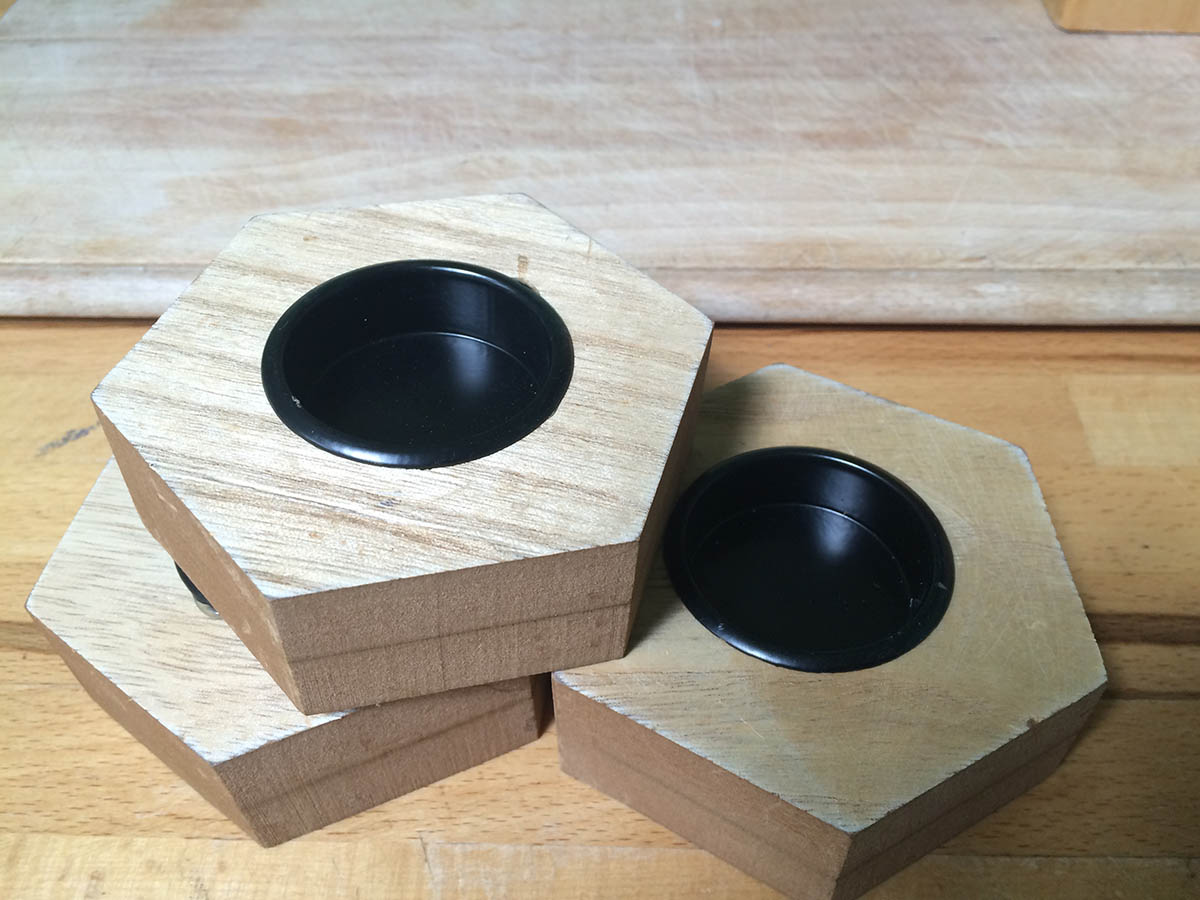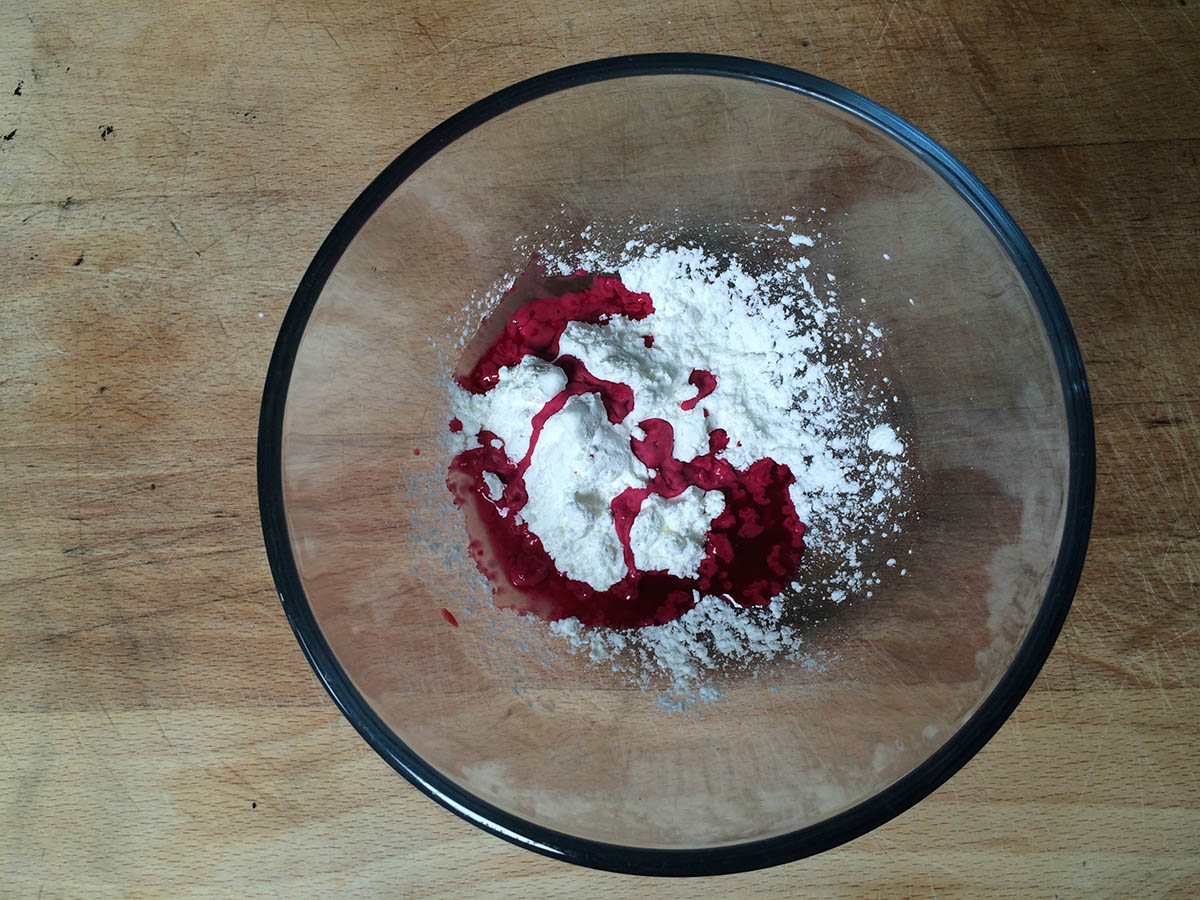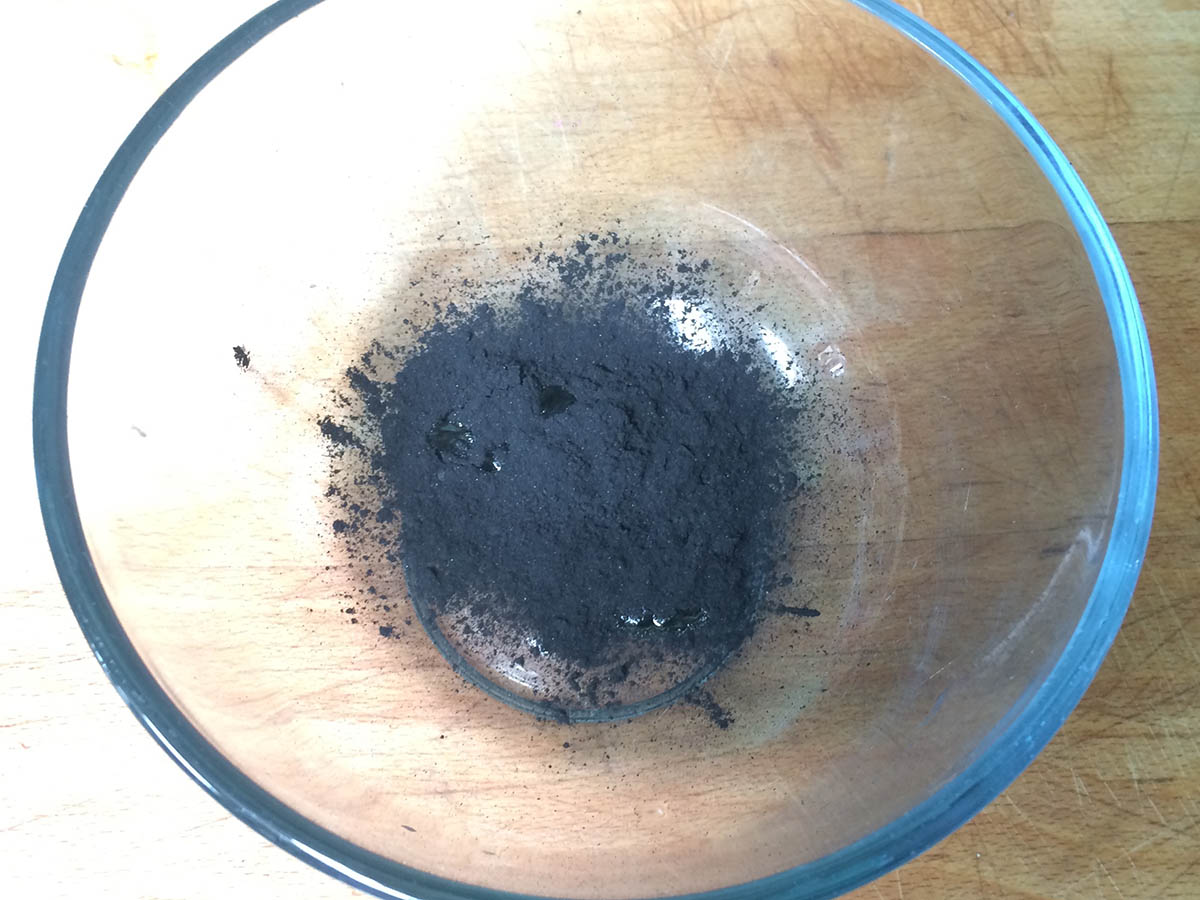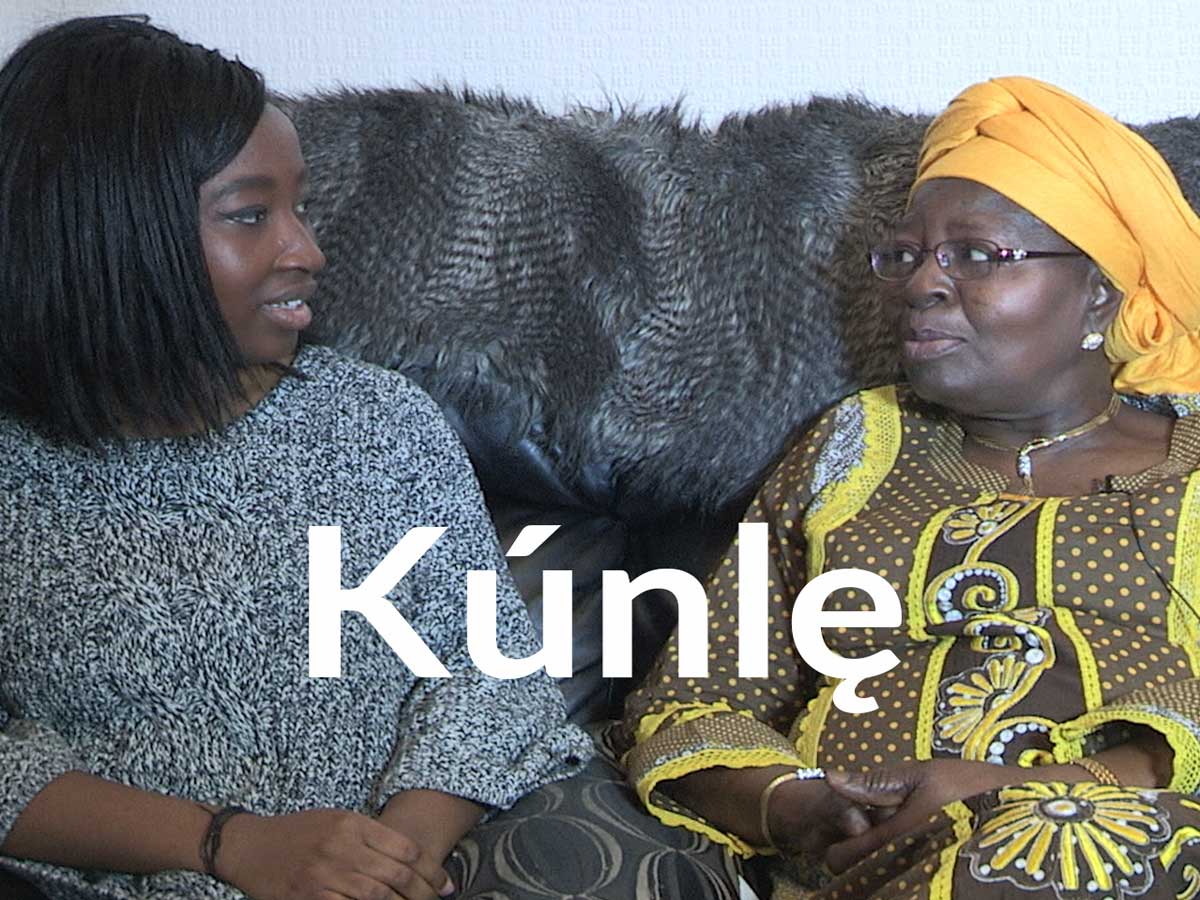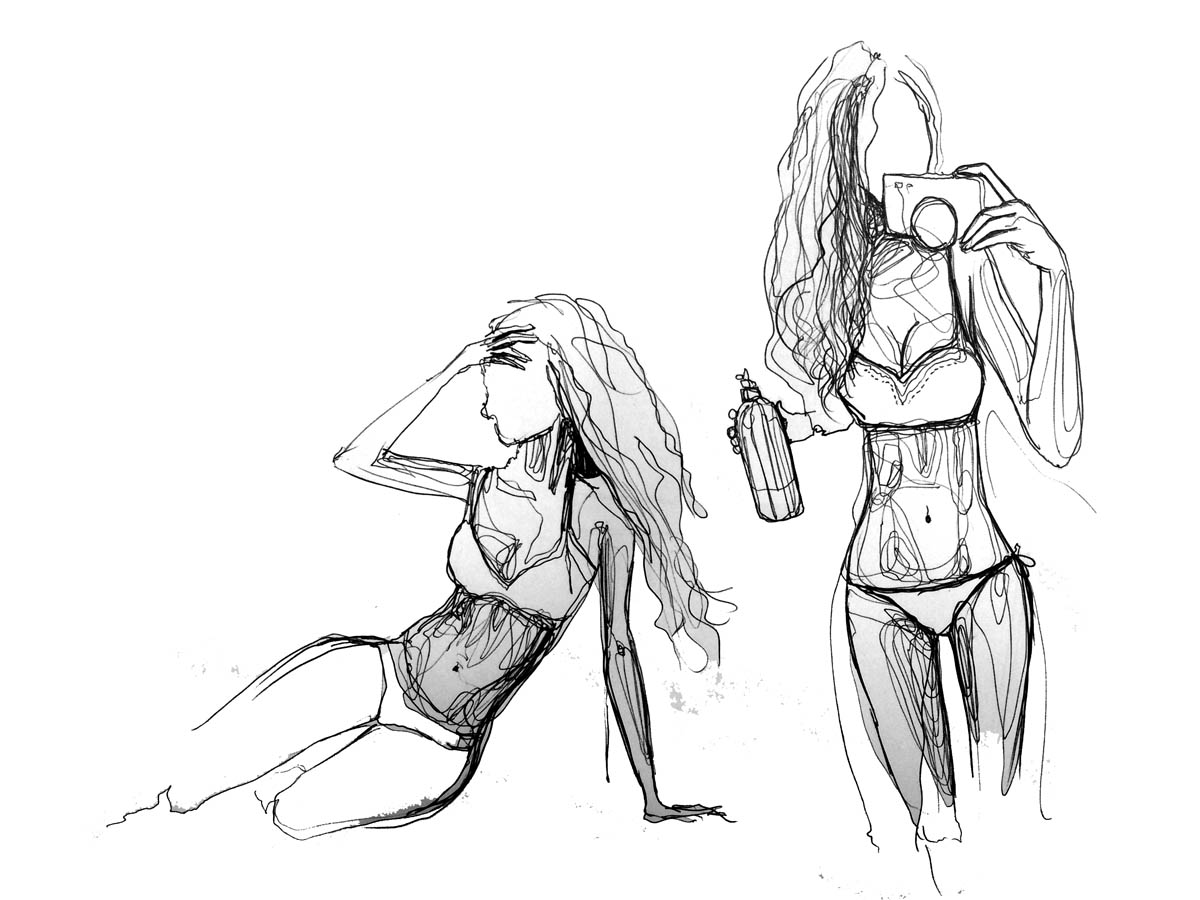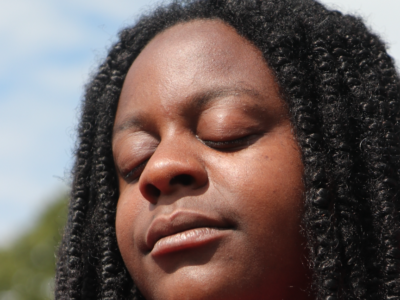How To Make Your Own Make-Up
After realising how limited the foundation options for dark skin tones are, Leo decided to try making her own cosmetic products.
If you’re of a dark-skinned ethnicity you might have noticed that your foundation options are pretty limited.
So, a few weeks ago I was walking through town doing my weekly window shopping when I got to a giant cosmetics store. I was looking at the make-up counters, of which there were lots, and in that whole store I only found one, ONE make-up brand in the entire store that appeared to sell foundation that was darker than a dark beige. What is up with that?
My friend and I once travelled to Cardiff just because a shop there was the nearest supplier of a foundation brand that reproduced our skin tones.
If you’re of a dark-skinned ethnicity you might have noticed that your foundation options are pretty limited. At some point you have to consider these options: either you commit to cheaper high-street foundations knowing full well that they won’t match your skin, you fork out way more more money than you want to, to buy from luxury or specialised make-up brands that are better at catering to darker skin, or you just forgo wearing make-up altogether. My friend and I once travelled to Cardiff just because a shop there was the nearest supplier of a foundation brand that reproduced our skin tones.
There has to be another way. If high street cosmetic stores aren’t interested in me then I’m not interested in them. I reasoned that I could just make all the products myself. Surprisingly, it actually kind of worked.
I went from this:
To this:
Alright, I admit, it’s not the biggest reveal of all time, but every single thing I’m wearing on my face in the second picture I concocted with my own hands in my own kitchen. All of them were made with natural, easy-to-purchase ingredients. I think that’s quite cool. Maybe you’re like me and want to make the perfect shade of foundation for your skin, or maybe you just don’t want to spend a whole load of money on expensive make-up. Whatever your reasons, if you want to learn more about making your own make-up, keep reading.

The ingredients: Vitamin e-oil, activated charcoal, essential oils, aloe vera gel, candle holders, coconut oil, tumeric, cornflour, drinking chocolate, beetroot.
…you could end up making a lifetime supply of make-up for about £35
After doing some internet researching I hunted down all the ingredients I needed and spent an evening and an afternoon making the make-up. Most of the products I ended up using were things I had around the kitchen and bathroom anyway. The ingredients are all quite cheap too. I reckon doing it all DIY means you could end up making a lifetime supply of make-up for about £35, the price of some expensive foundations.
The only thing that was difficult to source was something to actually keep it in. Being the total creative that I am I just purchased these cute little wooden candle holders from a homewares store which did the job fantastically.
These were three for a fiver and one of the most expensive purchases I made when preparing to make the make-up. I also found some old lip balm containers that I washed out and re-used. Recycling rocks, man.
Once you’ve acquired everything you’ll need, including a glass mixing bowl, it’s go-time.
Foundation
I tried making the foundation first because this was the product I was most invested in. I have probably been buying and wearing make-up for seven years now and in that time I have never owned foundation an exact match to my skin. Would this be the day? I found a lot of recipes online for DIY foundation but loads of them contained really obscure products. This one YouTube video featured a woman declaring ‘how to make foundation with things from your kitchen cupboard’ and then she proceeded to pull out her bentonite clay powder. I don’t know about you, but what I keep in my cupboard is cereal. And eggs, because they take up too much room in the fridge.
Firstly I needed a base for the foundation. Most recipes suggested that arrowroot powder is the best but, I’ll be honest, I have no idea what that is or where to buy it. Instead I used cornflour because out of all the types of flour in the supermarket it was the one that seemed most similar in texture to actual powder foundation.
For all of these recipes my method was pretty much ‘just see what happens’ and so I don’t have any exact measurements. Figuring it out is part of the DIY process.
The next step was giving the flour colour. The recipe I was going from suggested I use cacao powder, which is like cocoa powder but really expensive. I just used cocoa powder. It also suggested cinnamon but I went to three different supermarkets and we must be going through a cinnamon shortage or something at the moment because none of them had any. Because I have yellow undertones to my skin I also added turmeric. If your skin is darker than cocoa powder I suggest adding a little bit of activated charcoal (more on what that is further down). Basically, just add or omit ingredients until you get to your skin tone.
Next you just mix all of it up in a bowl. What I realised after I started was that the powder is always going to look lighter in the bowl as it’s dry. I added a touch of oil to the mixture to thicken it and the colour became immediately darker and more like the colour of an actual skin tone. Turmeric has a really pungent smell, though, so I added a few drops of essential oil to make it smell better. I used bergamot because I felt like that was a generic cosmetic product smell. That’s it. How easy is that?
Verdict: As I began dabbing a brush into it I realised it was a lot more crumbly than store-bought foundation. However when I applied it to my skin it was the exact same colour. It didn’t give me a smooth airbrushed look but it did cover up a few spots and blemishes relatively successfully. Realistically it’s too crumbly to use on a regular bases, but perhaps if I mixed it with some moisturiser and used it like a liquid foundation it would work. The point is, it took me three and a half minutes maximum to create a pot of foundation the exact same colour as my skin, but high-street make-up brands aren’t even trying to do that for me. Step your game up, guys.
2.5/5
Blusher
I told a friend I was creating DIY blusher and they pointed out that the easiest way to get DIY blusher was to pinch your own cheeks. Which is fair enough but also an unnecessary level of pain and doesn’t include the fact that a lot of people with dark skin don’t visibly blush very much. I’m just trying to provide the world with makeup options that are accessible to anyone, because high-street stores still aren’t. Besides, if anybody naturally blushes the exact colour of this blusher then I really recommend contacting your general practitioner.
I started off with cornflour again and then tried to think of natural products that were a pink colour. I tried some dried raspberry and cranpberry fruit tea thinking that if it stained the water pink it would also stain the flour. Turns out the tea had all these funny twigs in it and didn’t do any staining whatsoever. The internet gave lots of suggestions of beetroot powder which you can apparently buy in health food stores but I went to a couple and didn’t find any. However I did remember this really nice beige top I used to have that got totally ruined by a beetroot juice stain, so I bought a beetroot and just let it dribble over the flour for a bit.
The beetroot juice made the cornflour really hard for some reason, so I had to get a mini rolling pin to break it up a little bit. Once it was mixed in it came out the hottest shade of pink out. I actually got really impressed and awed that natural ingredients can produce such a vibrant colour.
Verdict: Oh man, this was like the poison dart frog of make-up products. The colour was utterly amazing and it looked beautiful, just like a poison dart frog does before it makes contact with your skin and poisons you. This product and myself just did not mix. The cornflour got so stiff and hard and just broke off in chunks on my brush. It took ages to put enough on so that I actually looked like I was wearing make up and it was so flaky. What was worse, when I tried to wash it off it had literally stained my cheeks pink. The beetroot worked far too well. But hey, at least it lasted over 24 hours, right?
1/5
LIPSTICK (MORE LIKE BALM)
I don’t think I even took an isolated picture of the finished product because I messed up so badly. I was totally winging it with this product. I didn’t Google any kind of recipes, I just thought ‘I know what a lipstick is, let me make it’. It turns out not only do I not know what lipstick is or how to make it, I’d also forgotten basic chemistry. Let me explain.
For the base of the lipstick I reasoned I would use coconut oil. I thought it would be perfect because it’s still solid at room temperature, like lipstick. I put it in a bowl, then put the bowl in a warm pot of water on the stove until it melted. I also added some aloe vera gel and vitamin e oil for its moisturising properties. Then I added more beetroot juice. It was all going pretty well to start.
It was this really rich colour when I had finished, and I figured I would just put that into a pot and put it in the fridge and then when it had cooled it would be like a lipstick. But I forgot that water and oil don’t mix and so when it cooled, the water based beetroot juice separated to the bottom while the oil stayed at the top. It did give it this cute baby pink colour that you can see in the header image, but that was only due to the optical illusion of seeing the beetroot juice through the translucent coconut oil.
Verdict: As a lipstick this did not work. At all. Absolutely no colour showed up when I applied it to my lips. I can’t even pretend like this came anywhere near to mimicking actual lipstick. But, it turns out, the mixture of coconut oil and aloe vera gel actually made for a pretty banging lip balm. I would definitely make it again for that reason but next time minus the beetroot.
0/5
Eyeliner
For some reason the picture I took of this makes it look really lumpy but it was actually quite tar-like and sleek in reality. Do you remember the activated charcoal I mentioned further up? Well, this is it’s debut. This is the original eyeliner, it’s probably what Cleopatra was using to draw on her infamous cat-eyes. It’s also the easiest recipe of the lot.
Activated charcoal is probably not an ingredient that you’re likely to have lying around in your cupboard casually, but it can be purchased relatively cheaply, as in, relative to the sheer amount of eyeliner you can make out of it. It’s literally charcoal, which is apparently good for digestion so it can be bought as a supplement in pellet form to swallow. But why digest something when you can smear it all over your face, amiright? All you have to do for this one is break open a pellet and drop a little water on it. Mix it up et voila. Eyeliner. It’s literally that simple.
Verdict: This actually worked and was as good or if not better than store bought eyeliner. I would stress that it really only needs the tiniest amount of water to get to the right consistency. This stuff gets watery really quickly and loses some of its dark, sleek, eyeliner quality. I’d also recommend getting a really good brush to apply it. Or making your own if you’re in the DIY spirit still.
4/5
Eyeshadow
More activated charcoal in this one. I’m not a regular make-up wearer (because I can’t buy it anywhere) so when I do wear make up I go for intense looks. I wanted to make a dark eyeshadow so I could be all smokey-eyed and mysterious.
This one is pretty simple. More cornflour and more activated charcoal. This is what the pellets look like before you open them. Just keep adding to the cornflour until it’s the darkness you want. This DIY thing isn’t so hard now is it? What I will say is that I added a little coconut oil to this mixture and some essential oils for smell which made it much firmer when I put it into my candleholder.
Verdict: Well, it worked. I could wear it as eyeshadow and it doesn’t look crumbly or weird. The annoying thing about it was that although it stuck to my eyelids just fine, it wouldn’t stick to my eyeshadow brush so I had to apply it with my fingers. The colour didn’t come out intensely strong but as a subtle grey it could be worn. Activated charcoal was definitely the most successful DIY beauty ingredient I tried, but also the most expensive ingredient that I used (and also the least likely one to have hanging around the house). I’m not sure what that means, but it means something.
3/5
Overall verdict: Some of these products really surprised me. The charcoal eyeliner is something I will definitely use again. All of the products have potential to be genuine wearable products if I committed to tweaking with the process. At the end of the day, I had fun making them, and isn’t that what matters most?
Err, no. Adequate representation of all skin tones in the cosmetics industry is what matters most. Am I seriously out here rubbing flour on my face because it’s my best make up option? Come on, cosmetics industry. Do better.
Happy DIYing, guys.
Do you find it hard buying make up? Which are your favourite brands? If you have any DIY make up tips of your own, let us know @rifemag
If you’ve caught the DIY bug, why not check out CYN’s short courses on Creative Careers?
Related Articles
VIDEO: The Coexist Fashion Show by Gina Fielding
Bristol’s Best Beauty And Style Blogs by Sammy Jones
Easy DIY Projects For A Cheap Christmas by Jess Connett
More From The Author

